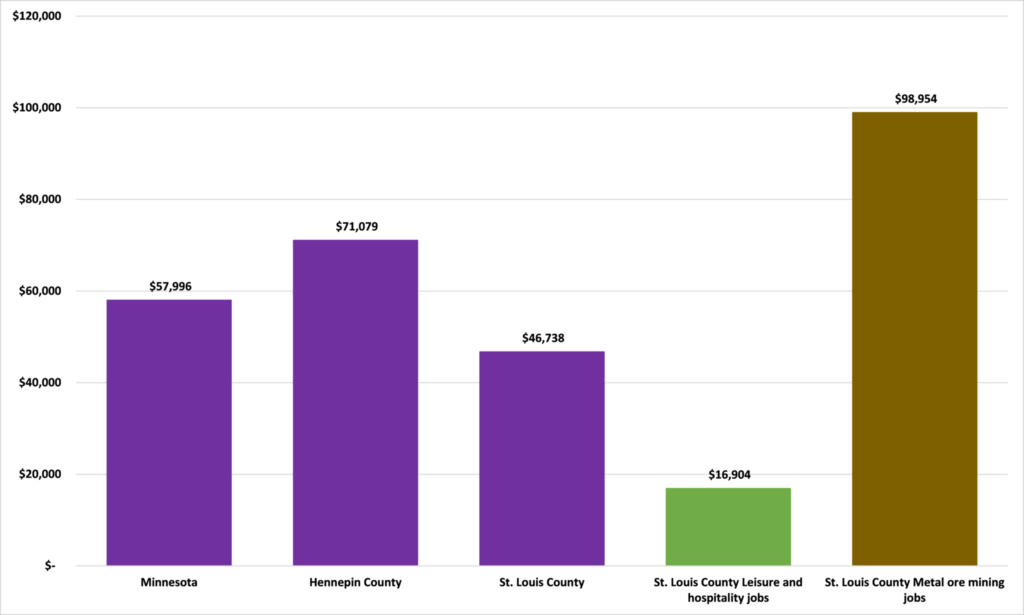Bureau of Land Management Moves To Prepare Environmental Impact Statement for Proposed Twin Metals Project
On Tuesday, the Bureau of Land Management (BLM) announced that the agency will prepare a detailed Environmental Impact Statement to thoroughly analyze the potential environmental impacts of the proposed Twin Metals mine, which would produce copper, nickel, cobalt, and other precious metals.
According to the BLM press release:
“Under President Trump’s leadership and direction from the Secretary, this proposed mine may reduce the vulnerability to disruption of critical mineral supplies. If the plan of operation is approved, you can rest assured knowing that development and production of critical minerals is done in an environmentally responsible, regulatory-consistent, and economically feasible manner,” said William Perry Pendley, Deputy Director for
Policy and Programs, Exercising the Authority of the Director, BLM.
The Trump administration’s view of this project is the exact opposite of the Obama administration’s. In fact, the Obama administration had abused its executive power in an attempt to deny Twin Metals a renewal of the mineral leases that had been renewed by the U.S. Department of the Interior for decades.
According to the Wall Street Journal:
“In 2014, Interior delayed the renewals, calling for more “study.” In early 2016, the department’s solicitor issued a howler of a legal opinion, granting the government new authority to deny Twin Metals automatic lease renewals. It was an Obama extralegal classic: The opinion ignored precedent, existing rights and regular procedure. In a midnight kiss to green activists, the department officially blocked the leases on Dec. 15, 2016.”
Even Minnesota Senator Amy Klobuchar believed the Obama administration was incorrect to cancel the mineral leases. The Wall Street Journal, notes:
“Ms. Klobuchar bluntly states that the decision not to renew the lease “just floored me. Trump will reverse this. When you guys leave and are out talking about a job message for rural America, I will be left with the mess and dealing with the actual jobs. But you guys sure got a good story in the New York Times.” She’s the one who has to run for re-election in a state that still values its mining industry.
She lectures Mr. Vilsack that this “should have been handled through the normal process. It wasn’t.” She notes that she’d asked written questions in July but got no response. She brutally observes that the failure to do this right is “most likely . . . why we have the trump administration to begin with.” She also snaps: “Who cares about answering some pesky questions from a woman senator from the Midwest when you guys and the White House and the activists have all the politics down, right?””
The move to end these mineral rights just before leaving office was considered to be a slap in the face to many residents of Northern Minnesota who were eager for the economic activity the mine would bring to the region. According toe Twin Metals Minnesota’s website, the mine would directly employ 750 people at the mine in high paying jobs.
In fact, mining jobs are some of the highest paying jobs in the entire state. According to the Bureau of Labor Statistics, mining jobs in St. Louis County paid nearly $100,000 in wages in 2018. In contrast, the average wage in St. Louis County is about $47,000, and the average wage for tourism jobs in the county is only about $17,000.

The high wages paid in the mining industry act as pillars for the local economy, supporting other industries like equipment suppliers for the mines, auto dealerships, and bakeries. Twin Metals estimates a total of 1,500 additional jobs will be supported throughout the community from building and operating this mine.
Local school districts would also benefit from the mine, because more economic opportunity means people will be more likely to settle down and raise a family in the area, growing the population of the local schools, and raising the tax base for the entire community.
These are the opportunities that are lost when politicians arbitrarily decide to stop a project before its even had a chance to be evaluated by environmental regulators.
The Environmental Impact Statement is another good step in the direction of establishing the Twin Metals mine, but it still faces years of review on how the mine could impact the environment. This study is necessary, and it is important that Twin Metals meet, or exceed, all of the regulations that Minnesota and federal regulators have in place to ensure any potential environmental impacts are minimized.